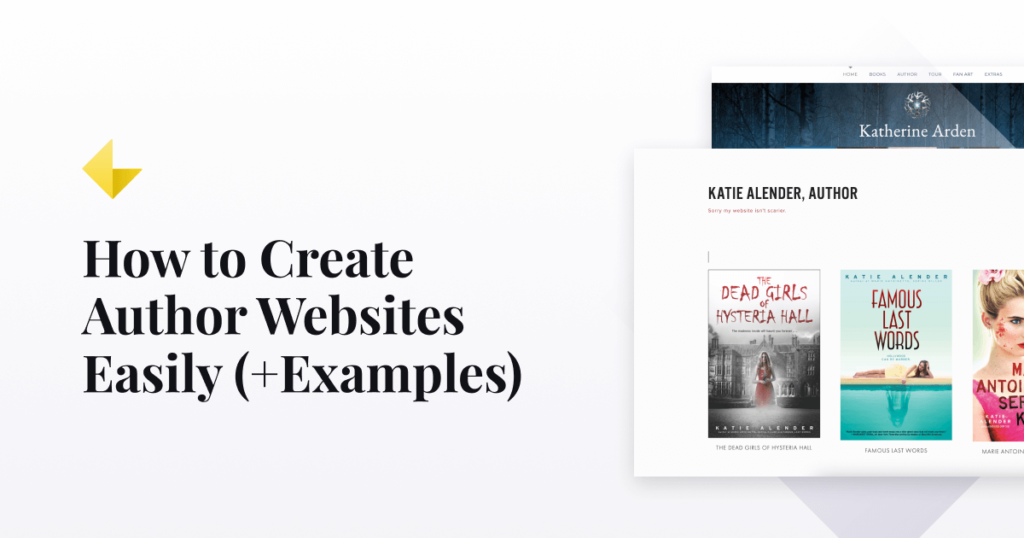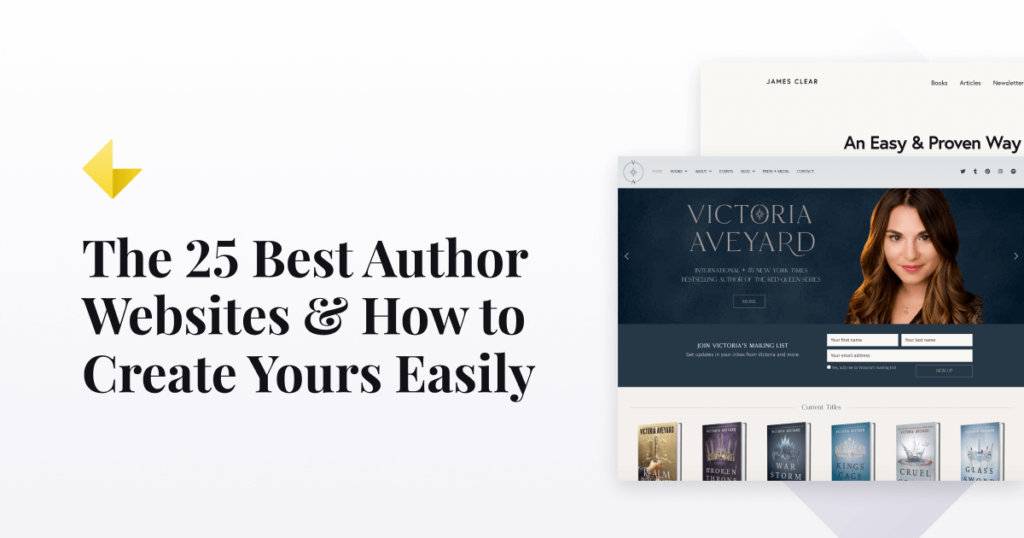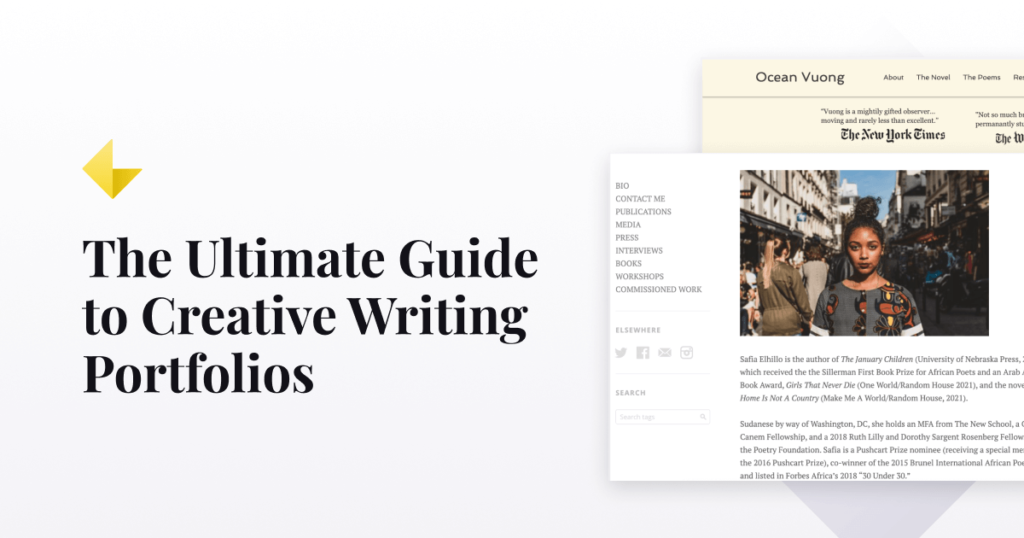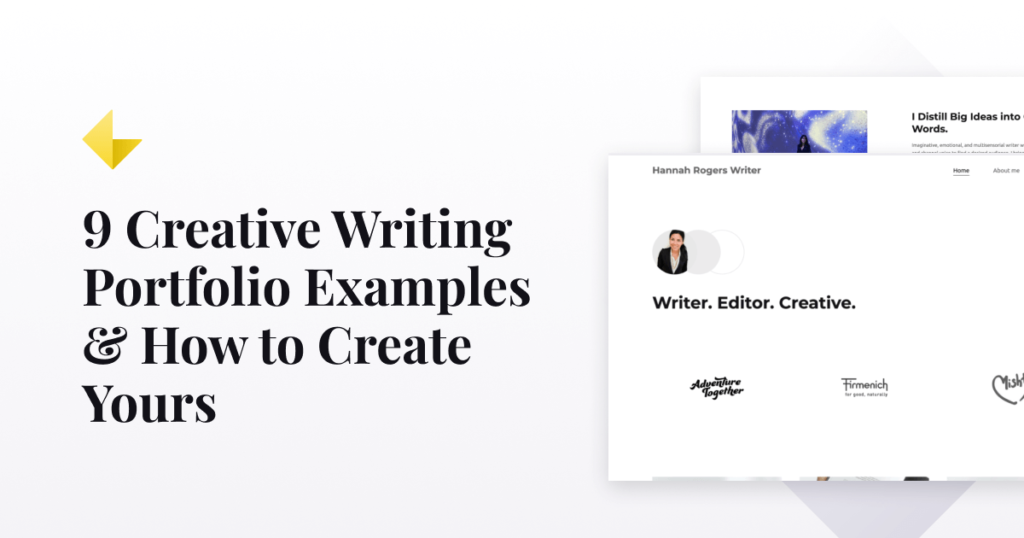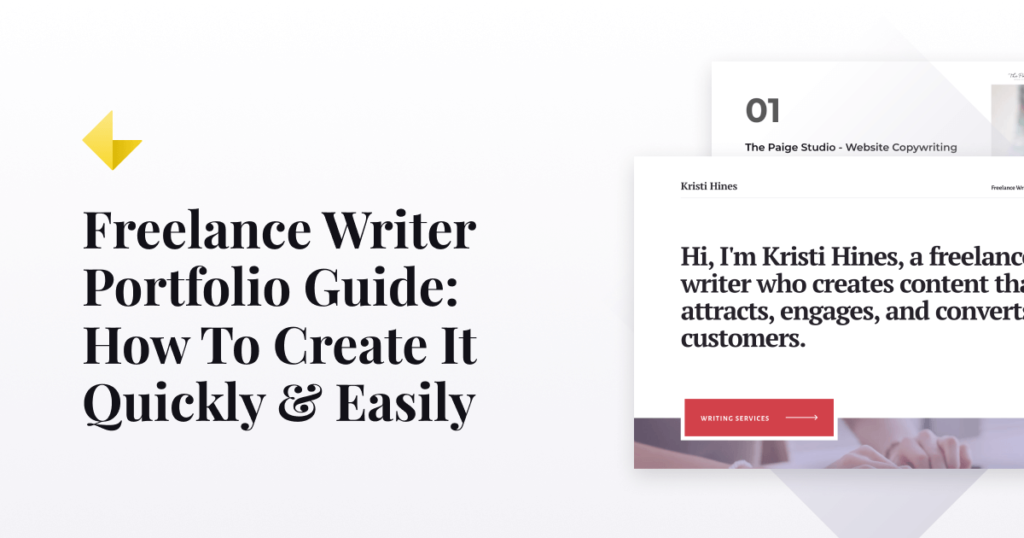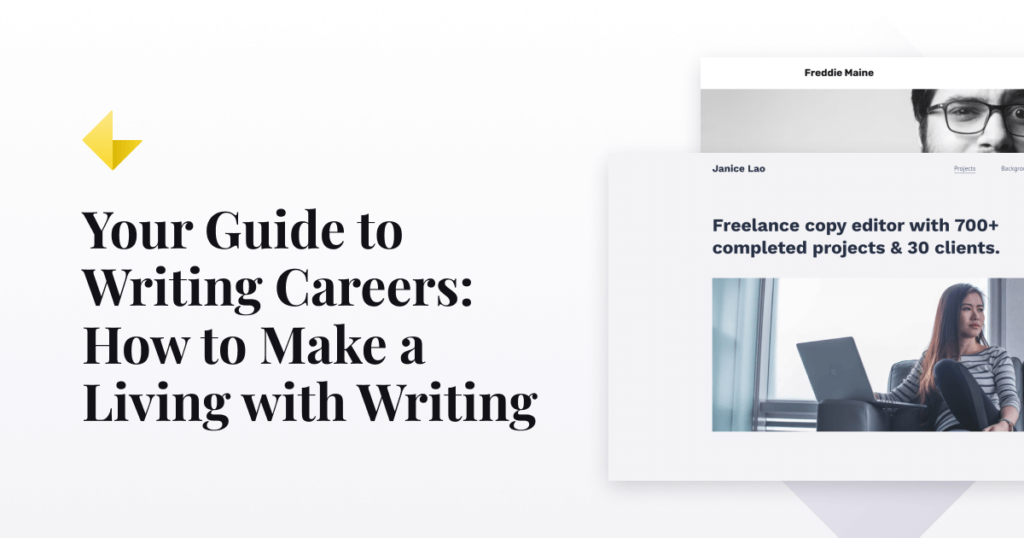Useful Resources and Interesting Reads for Authors & Creative Writers
Building a successful career with writing is not always the easiest path. That’s especially true now that the world moving online has drastically disrupted the writing world. While before it was enough to write your piece and get somebody to publish it, today you won’t get ahead without a strong online presence. Having an author website or writing portfolio could be the key to your success, so it’s important to get them right.
As the team behind Copyfolio, a portfolio website builder tool for writers, we’re dedicated to providing all the resources you need to boost your career and build your personal brand.
On this page, you’ll find tips and inspiration about creating your own author website (it’s much easier than you’d think) or writing portfolio, writing the perfect creative writer resume, and more!
How to create your author website easily
Let’s start with author websites. It might sound like an intimidating task if you’ve never done it before —but with the right tools, it’s not nearly as complex as it may seem.
How easy or difficult it will be to build your own website, mostly depends on the website builder you use. You’ll need something that’s quick and intuitive, lets you create a site that’s on-brand for you, and holds your hand whenever you need it. Check out our article for the best website builder for authors!
Once you have your website builder, the next step is choosing a template. It’ll help you have a solid base for your site that you can then customize. Read our post and get to know Copyfolio’s author website template called Letterpress, along with a step-by-step guide on how to set it up for yourself.
Research is valuable before starting a project —as a writer, you’ll know that really well. And if you’d like to get even deeper know-how of author websites, read through this post as well before you get started. You’ll learn about why author websites are essential, what the best author websites have in common, what one should include, and more.
Even if you know what you should include and how you should go about creating a site, it can still feel intimidating to get started. Kind of like staring at the cursor blinking on an empty page when you sit down to write something. The best cure for that is a boost of inspiration, so check these author website examples we collected for you.
Tips for creating an outstanding writer portfolio
If you decided not to go the traditional author route, the website you’ll need will be a little bit different. It should be more of a portfolio of your writing samples —and some info on your services, if you work freelance. So in this section, you’ll find articles that’ll help you create a portfolio website like that.
Let’s start with the basics: the creative writing portfolio you’ll need for or in school —and the one you can put together after you graduate. There are some differences between the two, and that’s what you can read about in this post. You can also read about what you can do with a creative writing degree, and some practical tips for creating those portfolios.
Want to see some examples as well?
Check out these 9 creative writing portfolio examples for inspiration, all created with Copyfolio.
One aspect of portfolios we haven’t touched on yet is design. In this post, you’ll get design tips for creating a stunning writing portfolio website. You can also find out all you need to know about the performance of your site and learn some portfolio website content best practices.
As student and professional portfolios differ, so do the ones of in-house and freelance writers. In this post, you’ll see some examples and get some tips for creating the latter. Just getting started with freelance writing? Don’t worry, the article also has tips for getting writing samples for your portfolio.

Let’s finish this section just like the last: with some great examples to give you some inspiration. We collected 29 writing portfolios you can browse through to get an idea of how others make theirs. We hope they’ll get you excited to start creating yours!
Other writing career-related reads
We have some other career-related articles for you that are not exactly about portfolios or websites —that’s what you’ll find in this section. From resumes to freelancing, we cover many different topics and will be updating this list as more posts come out. So don’t forget to check back later to see if there’s something new for you to read!
Although it’s your portfolio that best showcases your expertise and represents your professional writer brand... Sometimes you’ll still need to submit a CV too. To make sure that your resume is top-notch, we created this easy 5-step guide to lead you through the process.
In case you know that you want to write for a living, but are not exactly sure how to make that happen, this blog post is for you. It goes over the top 9 writing careers, explaining what they entail and what you’ll need to get into each. It’s your go-to guide for transitioning or getting into the writing career of your choice.
And since we’re talking about getting into new writing careers, a change just as significant would be going freelance as a writer. This post covers everything from writing skills, networking, pitching, and more. So if you’ve been thinking about going freelance, give it a quick read!



